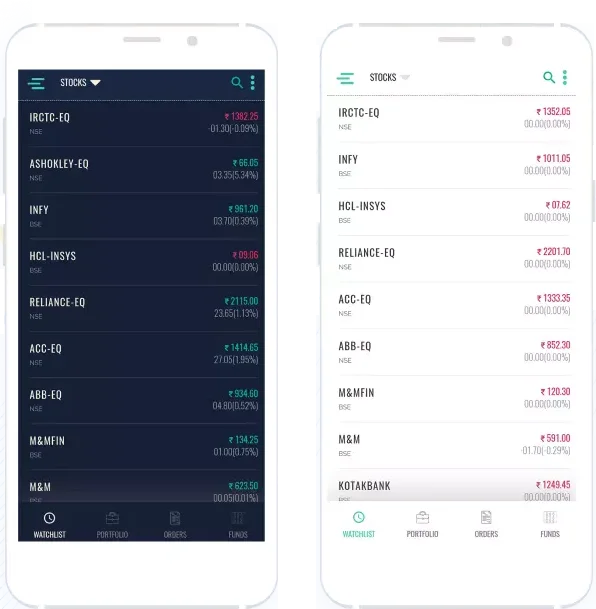Parameters to Assess a Fund

In the earlier chapters, your best financial guide, Shalini, has covered all the basics of mutual funds, types of mutual funds, and the terminologies used in mutual funds. Raju has become a pro-investor in mutual funds now. Are you too? Well, she’s happy for Raju, as he’s not only utilizing his free time to learn something productive but also incorporating Shalini’s learnings and investing rightly in proper funds by setting up an objective. We hope you are following the same protocol as Raju. If yes, then great.
In this chapter, I, Shalini, will be discussing the list of important parameters required to assess a fund. Using these indicators, you can decide whether to invest in the fund or not. So, why don’t we get started? Make notes of whatever information I’m sharing with you here, as it’s going to be useful for you when you start investing in mutual funds.
Introduction
Investing in mutual funds is one of the safest ways to grow your wealth. Though stocking in equities provides investors with affluent returns, there’s a high chance of losing it all as well due to its high-risk nature. If luck goes your way followed by your analysis and research study about the market before investing, then, you end up getting more than what you expect.
Now one thing every investor must know is that the return on investment depends on the market volatility and risk factors (market risk, sector risk, and company risk). As an investor, by putting your money in mutual funds, you are not only diversifying your unsystematic risk but also, in a way, protecting your capital from systematic risk. One better way to start investing in mutual funds is through SIPs (Systematic Investment Plans).
There are many mutual fund schemes that offer considerable returns than fixed deposits. Without proper knowledge about the funds, it’s not advised to invest in mutual funds in the first place. There are certain mutual funds parameters investors should know before investing in any of the schemes. They help you to analyse the fund and know their performance over the years. Don’t worry, we’ll share with you a list of parameters to check before investing in mutual funds.
Parameters to Analyze Whether a Mutual Fund Is Right for You
As an investor, you have to be informed about these mutual funds parameters. You can find most of the information about the fund in the mutual fund factsheet. It includes the rudimentary aspects of the fund like the name of the fund manager, the start date of the fund, nature, objective of the fund, the net asset value of the plan, minimum investment required, assets under management, and key ratios. So, without any further ado, let’s go to the key parameters to analyse mutual fund performance.
Expense Ratio: This is one of the important mutual funds parameters that every investor must check out while thinking about mutual funds. As you know, managing a fund involves cost, every mutual fund house charges a certain percentage of annual maintenance charges called the expense ratio. Also known as management expense ratio (MER), these charges are imposed by the mutual funds to meet the fund expenses. The AMC (Asset Management Company) pays this fee in part as a maintenance fee to the fund manager for managing your fund. Some of the operating expenses involved with respect to the fund are advertising costs, auditor’s fees, allocation charges, advisor’s fees, transaction fees, distribution fees, brokerage fees, and administrative expenses. These costs are not charged directly, instead, they all are included in the fee paid by the investors. The more the expense ratio, the less will be your take-home profits.
The expense ratio abbreviates your overall returns on your investment. Generally, actively managed funds have a higher expense ratio than passively managed funds that mimic the index. However, SEBI has drafted defined limits where AMCs can charge from the investors only to that extent.
| Asset Under Management | Max. Expense Ratio |
| Up to Rs. 500 Cr | 2.25% |
| Above Rs. 500 Cr up to Rs. 750 Cr | 2% |
| Above Rs. 750 Cr up to Rs. 2,000 Cr | 1.75% |
| Above Rs. 2,000 Cr up to Rs. 5,000 Cr | 1.6% |
| Above Rs. 5,000 Cr up to Rs. 10,000 Cr | 1.5% |
| Above Rs. 10,000 Cr up to Rs. 50,000 Cr | 1.5% + Reduction by 0.05% on every additional Rs. 5,000 Cr |
| Above Rs. 50,000 Cr | 1.05% |
Fund Performance vs Benchmark Performance: Whether you are a regular investor or a rookie, this is the basic parameter to analyse mutual funds. It’s the easiest way to find out how well the fund is performing against the benchmark index.
If the fund returns have outperformed the benchmark index returns, then it’s good to go with that mutual fund scheme. Investors can also compare with funds that are about to launch, and the funds that don’t have any previous track record. In case, if the fund is underperforming when compared with the benchmark’s performance, it’s a matter to worry about.
For assessing the fund in quantitative terms, there are two measures that you need to look out for – Alpha and Beta. While the former measure tells you the percentage of returns a fund has yielded as opposed to the benchmark returns, the latter tells you the stability of the fund against the market volatility. If the Alpha is zero, it means the fund is corresponding with the benchmark. If it’s less than zero or negative, the fund is underperforming the benchmark index. And if it’s above zero, the fund is outperforming the index.
Risk Level: No investor wants to lose all the money they have invested in the funds. The profiles are categorized based on risk and return factors. Typically, investors perceive that the higher the risk, the greater the returns, and vice-versa.
Mutual fund schemes reveal their risk level to the investors prior to investing. You can find the risk level in the Scheme Information Document (SID). There are 5 classes of risk: low, moderately low, moderate, moderately high, and high. With the help of statistical measures like Sharpe Ratio, Standard Deviation, Alpha, Beta, R-Squared, you can calculate the risk-return values.
These quantitative tools tell how much return an investor can get by holding an investment at a certain risk level. Based on your risk appetite, you can choose the risk category. If you are averse to high risk and market volatility, avoid investing in high-risk funds. As mutual funds are all about diversification, building wealth, and upgrading your portfolio, always try and invest in mixed securities of equity and debt.
If you are an aggressive investor who’s willing to take the risk of market volatility, then, go for high-risk funds that generate huge returns than debt funds. If your investment period is beyond three years, you can go for credit risk funds that come under a high-risk profile. If you are a moderate-risk investor, you can pick out dynamic bond funds. They hover between short-term and long-term bonds. Based on the interest rates, the fund manager shuffles accordingly to maximize returns for the investors.
Funds History: This is another crucial parameter to analyse mutual funds. Fund’s history helps you to ascertain the consistency of the scheme. Through the historical data, as an investor, it would be easy to figure out whether the fund is good to invest or unworthy to skip. In case, if the fund is generating considerable returns for the last 5 years or more, then, based on the past trends, the investor can make a favorable choice. The concentration should be on the long-term performance, as mutual funds are linked to the markets.
Another aspect you need to understand is that the fund’s history is totally individual, and it doesn’t take the performance of other funds into consideration. However, fund comparison should be done with its peer fund for quality judgment. So, if you want to channelize your investments in a sagacious way, along with the fund’s history, keep a keen eye on other factors too.
Portfolio Turnover Ratio: In mutual funds, the fund manager handles the investors’ portfolios. From managing the fund to taking charge of buying and selling securities on behalf of the investors, the fund manager is responsible for the fluctuations in the fund NAV.
The Portfolio Turnover Ratio tells you how recurrently the fund manager is making turns of buying and selling. This is one of the key parameters to analyse mutual fund performance. It aids investors in detecting the unnecessary trading done by the fund manager. The higher the portfolio ratio, the lesser would be your returns on the investment. In other words, the higher the portfolio turnover ratio, the higher the fund expenses.
Consequently, this gives rise to higher transaction costs which not only lessen investors’ gains but also have to pay taxes on the capital gains earned. However, it’s not that easy to say about the fund’s performance based on one PTR factor, but we can consider this as one of the parameters to check before investing in mutual funds.
If the fund manager is rigorously trying to enhance the fund’s value by churning the portfolio frequently with an intention to obtain good returns, it’s obvious to witness a higher portfolio turnover ratio. Moreover, the returns should grow in correspondence to the rising portfolio turnover ratio. In case, if the portfolio churning doesn’t manifest any returns irrespective of the higher PTR, then this is something the investors have to worry about.
Fund Manager: Not the least but a very crucial parameter to analyse mutual funds. The fund manager is a part and parcel of any mutual fund scheme. They are responsible for managing your portfolio, both actively and passively. Their experience in the relevant field also matters as it proves how knowledgeable they are in handling your portfolio. The higher the fund manager’s experience, the greater will be chances of getting better returns, but not mandatory all the time.
The fund manager’s role involves monitoring the stock market, coming up with investing strategies, making buying and selling decisions on behalf of the investors, keeping the reporting standards in mind while designing a fund, complying with all the rules and norms laid by the SEBI, secure the investor’s wealth, and observing the performance of the funds and taking key investment decisions.
Also, don’t forget to look into the fund manager’s track record, past achievements, overall industry experience, whether the fund manager has outperformed the benchmark index or not, and returns earned in juxtapose to other mutual funds.
In a nutshell
- Each fund is different and yields different rates of return hence, it is important to analyze each parameter of the fund before making an investment
- Expense ratio is also known as Management Expense Ratio (MER) these are the charges imposed by the mutual fund to meet various expenses. Larger the expense ratio, the lesser your take-home amount.
- If the fund performance is equal to or greater than the benchmark performance, then the fund is favorable to invest in and vice versa.
- The Portfolio Turnover Ratio tells us how many times the fund manager is buying and selling your funds. The higher the ratio, the lesser the returns.
- Last but not least, the fund manager’s profile itself is an important parameter. Past records, experience, how many times he/she has outperformed the benchmark are a few things to look out for.


How Would You Rate This Chapter?
Next
Comments (0)